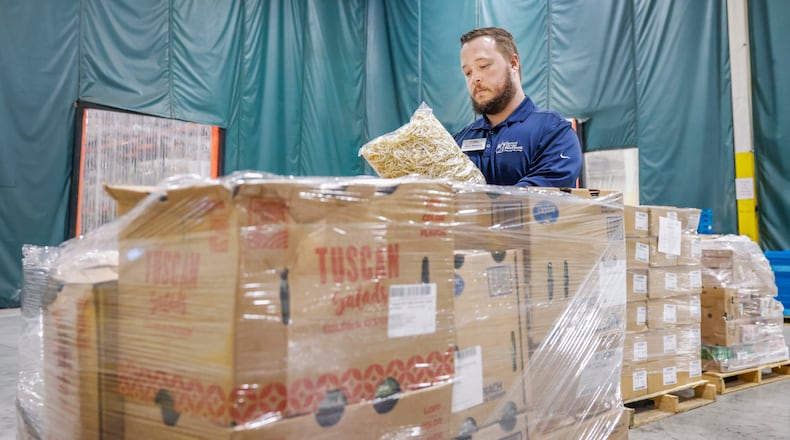This holiday season, those with plenty can help those in need by donating to or volunteering for local food pantries or Second Harvest Food Bank, which supplies 65 pantries in Champaign, Clark and Logan counties.
Clark County residents are more food insecure compared to state, national averages
Data backs up Zeller’s observation about times being tough. According to the Clark County Combined Health District’s 2025 Community Health Assessment, food insecurity in the area is rising above state and national levels.
About 15.6% of Clark County residents are food insecure, according to the Clark County Combined Health District’s 2025 Community Health Assessment. For comparison, the statewide percentage is 14.1% and the national percentage is 13.5%, according to data from Feeding America and the U.S. Department of Agriculture.
Clark County residents also rely on emergency food assistance more than state and national averages. About 18.4% of people in Clark County use Supplemental Nutrition Assistance Program (SNAP) benefits, compared to 12.4% in Ohio and 11.8% nationwide, according to the health assessment.
About 11.3% of families in Clark County are living below the federal poverty line, compared to 9.2% statewide, according to the county health assessment.
Clark County’s Latino and Black residents had the highest rates of food insecurity at 33% and 30%, respectively. Additionally, 23% of children in the county are food insecure, according to the health assessment.
‘We have the perfect storm with increased need and rising costs’
Alex Jackson, executive director of Second Harvest, said attendance at some mobile distribution sites has doubled since early October and folks have needed to visit food pantries for the first time.
Second Harvest gets more value for its food dollar because it buys wholesale, but those prices have increased at about the same rate as those at grocery stores.
“We have the perfect storm with increased need and rising costs as the holidays approach,” Jackson said. “Any of these things are frustrating, but everything at once is a lot.”
In response, Second Harvest has reallocated $100,000 from its 2026 budget to allow it to double the amount of food it has on hand now. Jackson said this is a “huge part of next year’s food budget.”
“We need continual financial help from the community to help purchase food to meet this need,” said Jackson, whose family used food assistance while he was growing up. “I have a huge concern families might not have the traditional Thanksgiving this year, but this is a community that cares and supports us.”
The best way to support Second Harvest is with a financial donation it can use toward bulk wholesale food purchases. Volunteers also are needed to help at the busier-than-usual mobile food distribution sites.
Jackson suggests taking food donations to local pantries; a list of those is on Second Harvest’s website at theshfb.org. For pop-up distribution sites and other updates, visit Second Harvest’s Facebook page at facebook.com/2ndHarvestOH.
Financial and food donations, along with volunteers, allow Christ Church Food Pantry to provide a monthly drive-through service the third Wednesday of each month from 10 a.m. to noon. Clients receive a protein box with three to four pieces of meat, fresh produce and shelf-stable items. They also can select from varying offerings that include such items as cleaning supplies, baby formula and pet food.
“Last month, we ran out of food,” Zeller said about the October pantry day. “I’m not sure what November will bring, but it probably will be a record high.”
How to help Second Harvest Food Bank
For available volunteer hours or to receive email updates about upcoming volunteer opportunities, contact Second Harvest Food Bank’s volunteer specialist at (937) 325-8715 ext. 115 or email volunteer@theshfb.org.
Individual volunteers can also visit Second Harvest’s website at theshfb.org/get-involved to fill out the volunteer application form and email it to volunteer@theshfb.org.
People can donate online or by mail. To donate by mail, make your checks out to: Second Harvest Food Bank of Champaign, Clark, and Logan Counties.
Mail them to: Second Harvest Food Bank, 20 N. Murry St., Springfield, OH 45503
Visit theshfb.org/donate to donate online or to find other ways to donate.
About the Author

